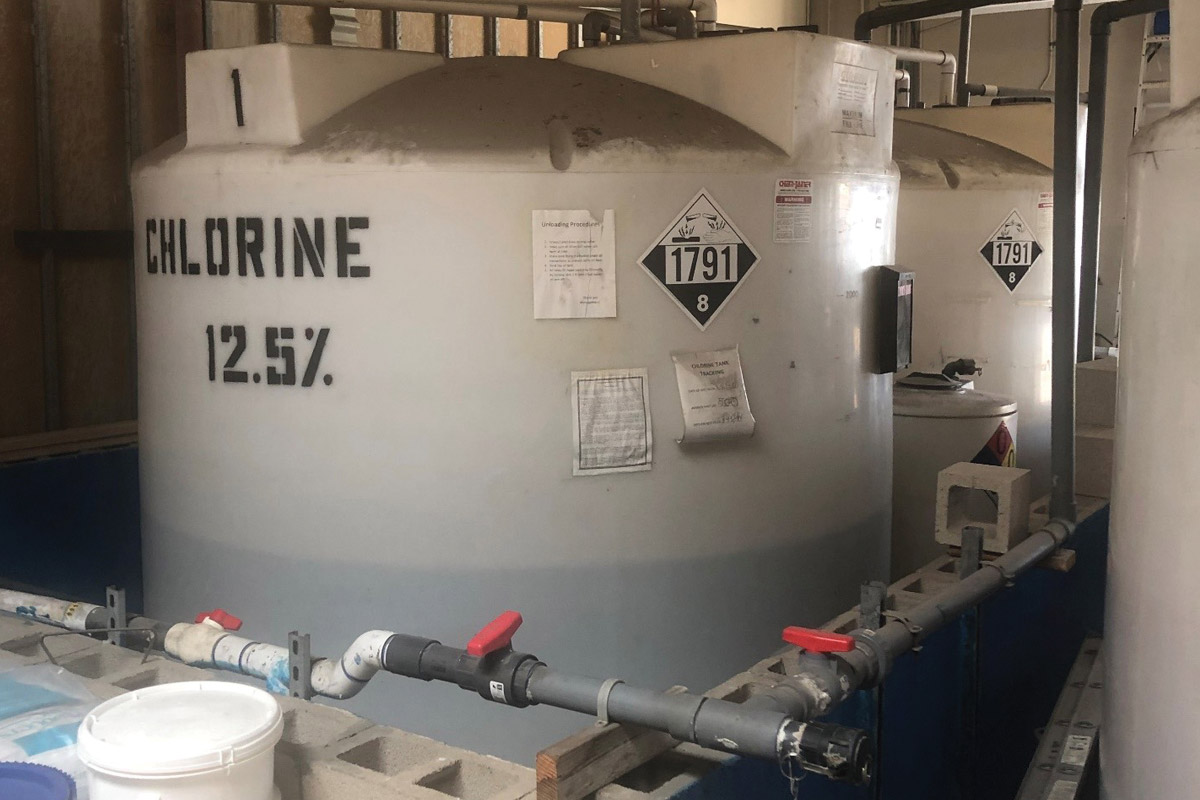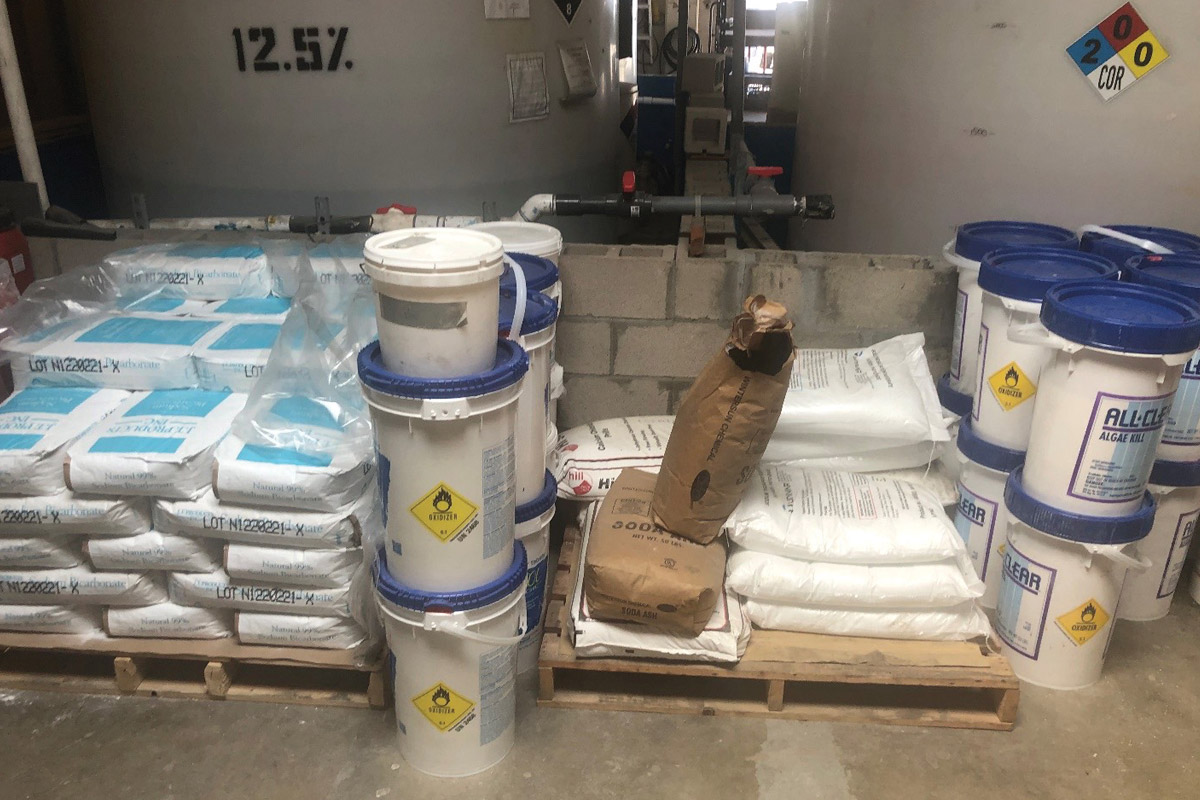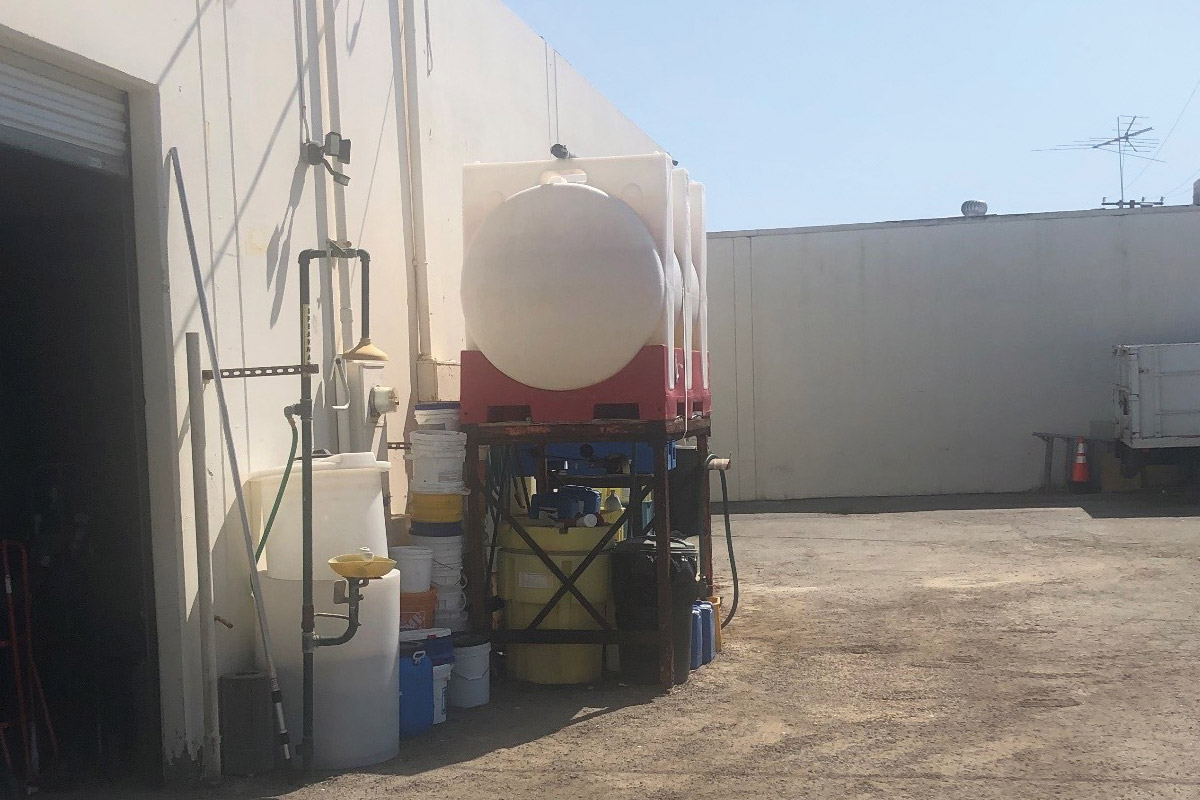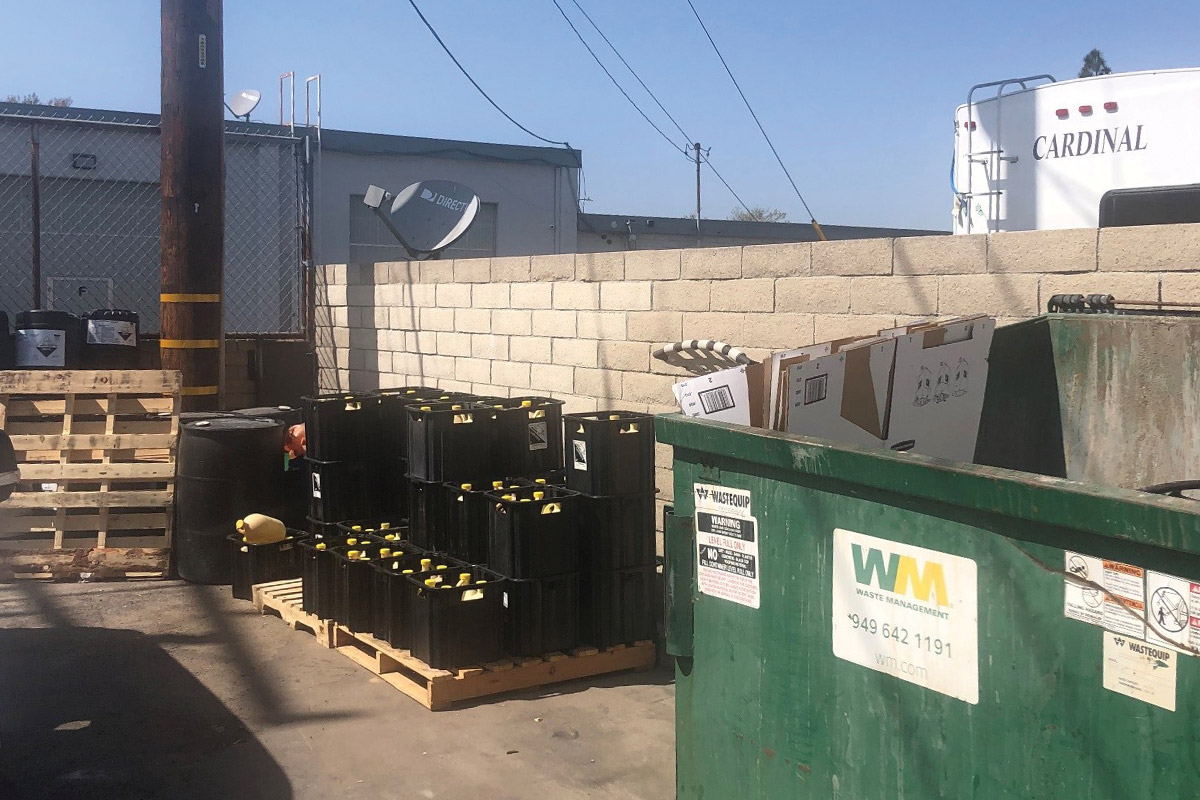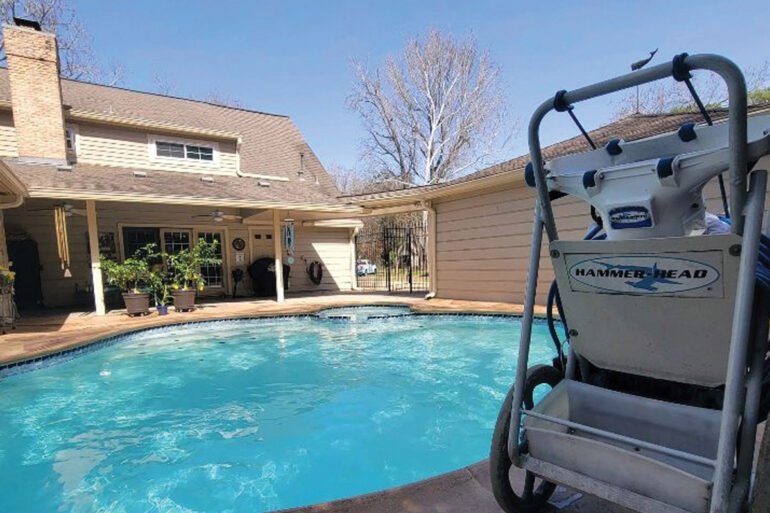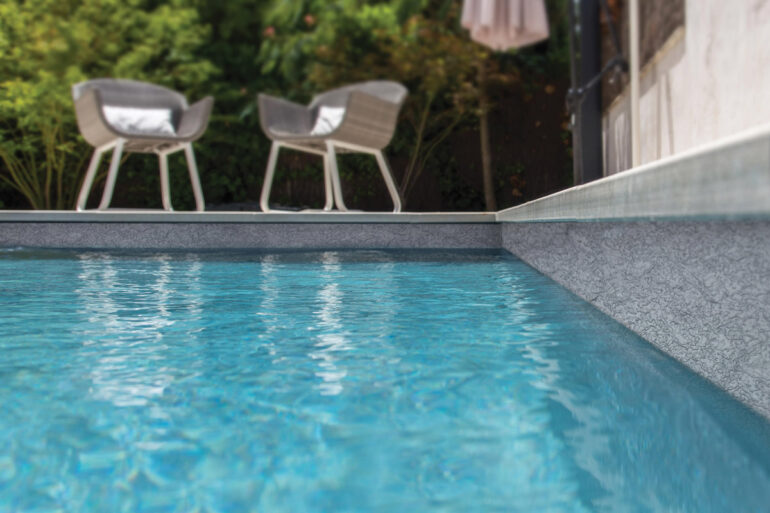Safety is Always in Season
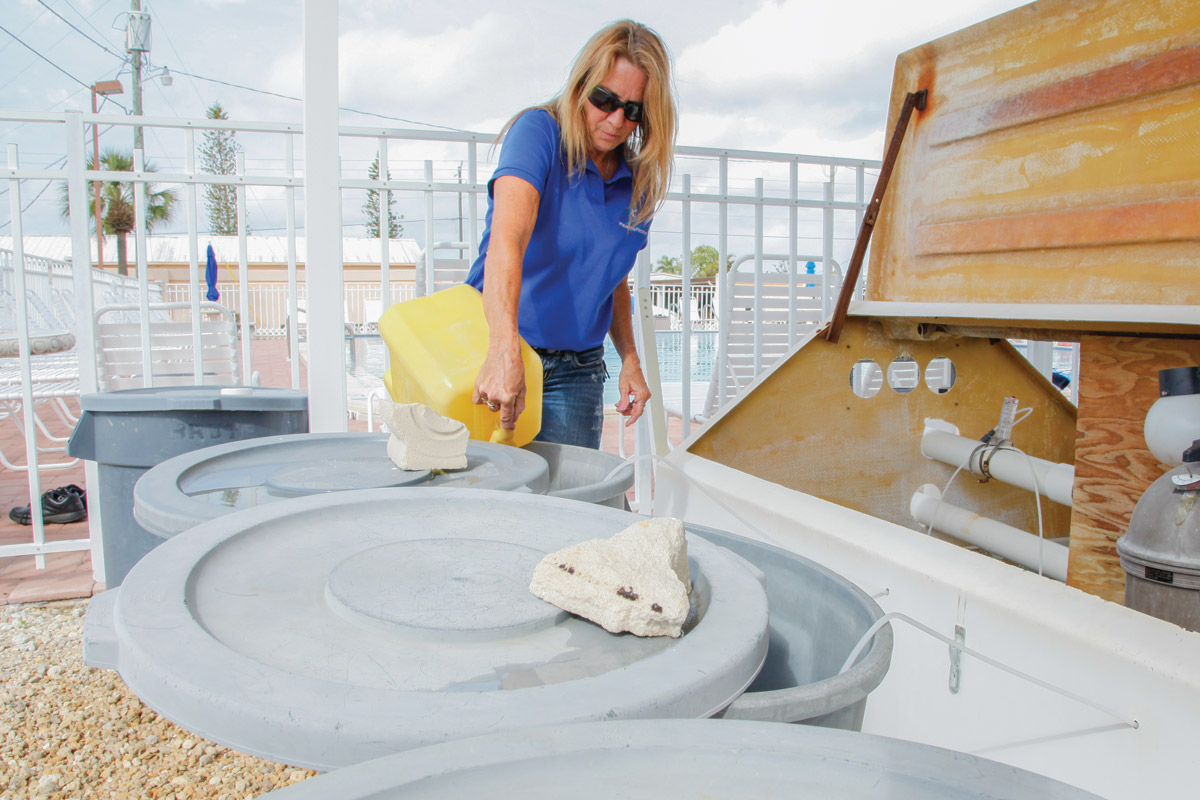
[letsinfoup] May is National Water Safety Month, but seasoned pool pros know reviewing chemical storage practices all year long is crucial for safety. As summer swimming increases across the country, experts identify some dos and don’ts for pool pros when it comes to chemical storage at commercial facilities.
Jonathan Shapiro, CEO of Best Pool Service in Southern California, says he’s seen countless examples of improperly organized equipment rooms and the destruction that has ensued.
“We have seen heaters and metal doors completely destroyed by chemical fumes and many examples of damage from [chemical] leaks,” he says. “Placing a large container [of chemicals] with or without a lid right next to a pool heater is a recipe for disaster.”
Shapiro warns that splashout when refilling the container, along with the fumes, will destroy a nice, new pool heater in a matter of months. “I can’t tell you how many times we have seen a tech lifting a chemical container, acid or chlorine,” he says, “that leaks and makes contact with other chemicals, creating clouds of toxic gas.”
Tyler Clarke, service manager for Magnolia Pool Service in Toronto, Ontario, says the aftermath of haphazardly storing chemicals can be detrimental to facilities and people alike. One often-seen but easily avoidable occurrence, he says, is missing or mislabeled chemical containers, a setup that can foster dangerous chemical reactions. “These mixtures often lead to buildings being evacuated, putting residents and users at risk of inhaling dangerous fumes,” he says.
Jason Broswell, owner of Pool Service by Jason in Northridge, California, warns that a cluttered storage room is a hazard. “Upon taking over a new facility with a very high-use, indoor commercial swim school, we found their chemical storage was in a utility closet inside,” Broswell recalls of one site. “They had stacks of cases of muriatic acid, including open bottles with no caps.” He says in addition to various cleaning supplies “just tossed all over,” containers of ammonia and muriatic acid had mixed together, resulting in toxic fumes.
Shapiro says poor ventilation is another concern, censorious of the number of times he’s come across the issue. “HOAs often store documents and other stuff in the equipment room, blocking critical air vents; this is not good,” he says. “Good flow of fresh air and exhaust are a must.”
He notes that this is particularly true if chemicals are being stored in an indoor or subterranean pump room, reiterating that fumes, especially muriatic acid, are corrosive to any metal equipment exposed to it.
To create a safer, efficient and functional storage space, Shapiro recommends pool pros ensure their facilities allow for sufficient separation between chemicals.
“In a perfect world, a separate room for chlorine and a separate room for acid are optimal,” he explains. “Short of that, containment that prevents the two chemicals from mingling is required.”
He also emphasizes the importance of labeling everything, starting with the door. “Totes, barrels, containers, bins and buckets all must have a label that clearly and correctly identifies the contents,” he says. “Mislabeling is an easy mistake, which is why separation is important. Make sure all containers are uniform for each type of chemical.”
Color-coding labels can help employees quickly identify what’s on the shelves. A manufacturer’s product containers may all have similar designs on the outside, which can confuse employees who are in a rush, Broswell says. Clearly defining and closely reading the labels is key.
“We make it a practice on pools we service to place chemical-resistant labels on feeder tubes and use chemical barrels that are color-coded and labeled with the chemical name,” Broswell says. “Whether inside or outside, place chemical storage in [separate] catch basins for leaks and spills.”
Training team members is another crucial element to ensure safety for everyone. “Educating employees is always the best practice,” Clarke says. “The more you know about these situations, the more confident you can be when making decisions about safely using, handling, storing or transporting these products. Keeping up to date with industry resources, local laws and maintaining a good relationship with your chemical supplier can allow for more transparency and education around the topic.”
Clarke emphasizes the importance of communication with everyone who may have access to chemicals, including commercial facility managers, and suggests weekly staff meetings to go over safety topics. “We supply laminated hard copy chemical info sheets for our technicians to use as a quick reference if they’re in a pinch,” he says. He also encourages an open and inviting dialogue with employees so they’re comfortable seeking advice. “No matter how many questions they may have, if they want to learn, teach them,” Clarke says.
When it comes to transporting these kinds of chemicals, red flags and horror stories abound. Shapiro says overloaded pickups, illegal use of trailers, chemicals not properly separated in truck beds and reuse of unlabeled containers are common sightings.
Broswell also testifies to the frequency of poorly stored and transported chemicals, even with regulations in place like hazmat certifications, commercial driver’s licenses and visible hazmat placards for vehicles transporting more than 400 pounds of hazardous chemicals.
“I’ve seen my fair share of pickup trucks overloaded with liquid and dry chemicals far exceeding this limit,” he says, noting the amount of pool service truck accidents he’s also witnessed on the roadsides. “Chemical spills are hazardous and costly to clean up.” He knows of one service provider who received a bill over $15,000 for chemical cleanup from a traffic collision. This incident involved liquid and dry chemicals spilling onto a roadway near Los Angeles, Broswell recalls, resulting in the fire department dispatching a hazmat unit to clean up the spill.
Clarke of Magnolia Pool Service says being up to date with local bylaws on chemicals transport is the best place to start. All his drivers have gone through a Transportation of Dangerous Goods Certification, a course designed to educate and prepare those transporting these dangerous goods on how to do so safely. He suggests companies outsource to a third-party service that specializes in chemical transportation if the company lacks the ability to properly do it.
Shapiro also recommends checking state and local regulations, and if a route requires a driver to transport an excess amount, modifying the route or finding another way to deliver to that pool. “We see many operators illegally carrying an excess amount of chemicals in their pickups,” Shapiro says. “It is not worth the risk.”
He advises pool pros to subcontract a professional delivery company for larger deliveries, “or be prepared to spend tens of thousands in setting up your own compliant delivery operation.” Clarke reiterates the significance of conveying information and training, pointing out that while most companies instruct staff not to mix certain chemicals, they don’t explain why or what the ramifications are. “Safety material data sheets on site, and printing off procedure sheets or flow charts unique to each site’s specific needs can help avoid redundancy-related mistakes,” he says. “Ultimately, training your staff to be aware of unfavorable situations that may occur and how to deal with them is best. These are the important discussions that need to be had with staff. Knowledge is power in our industry.”
What Not to Do
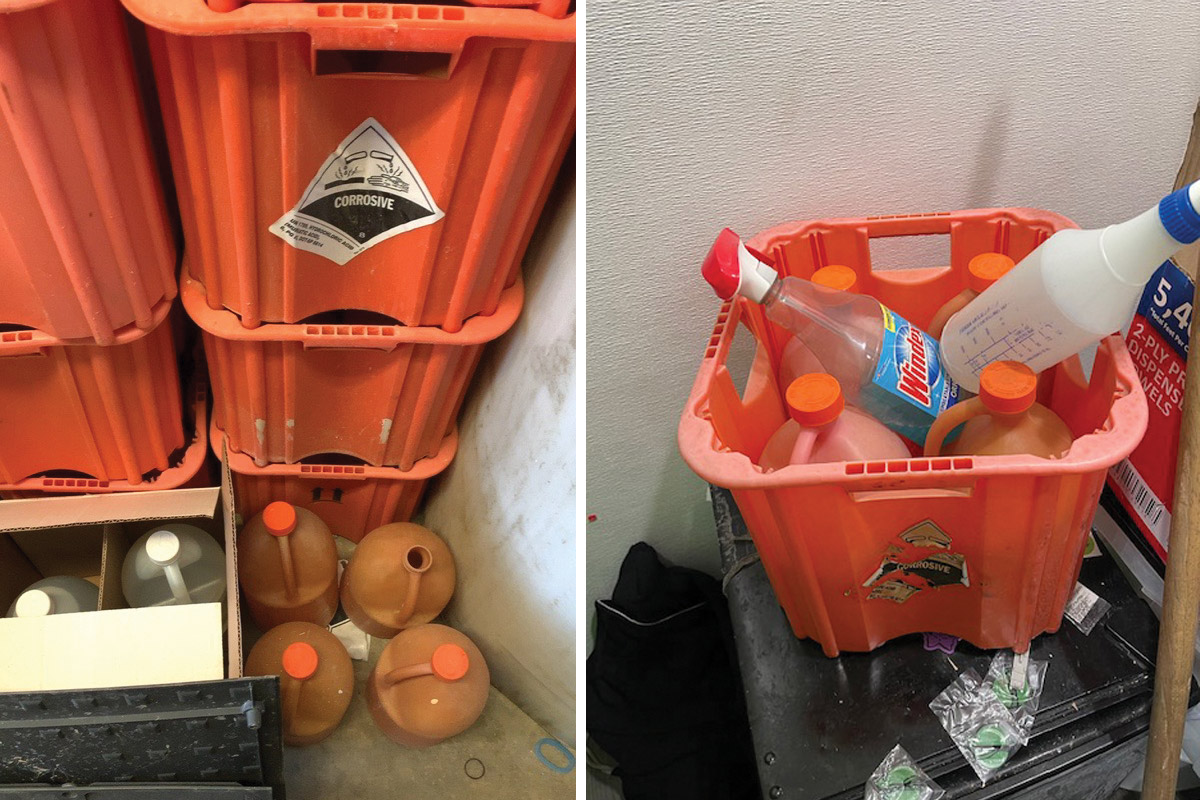
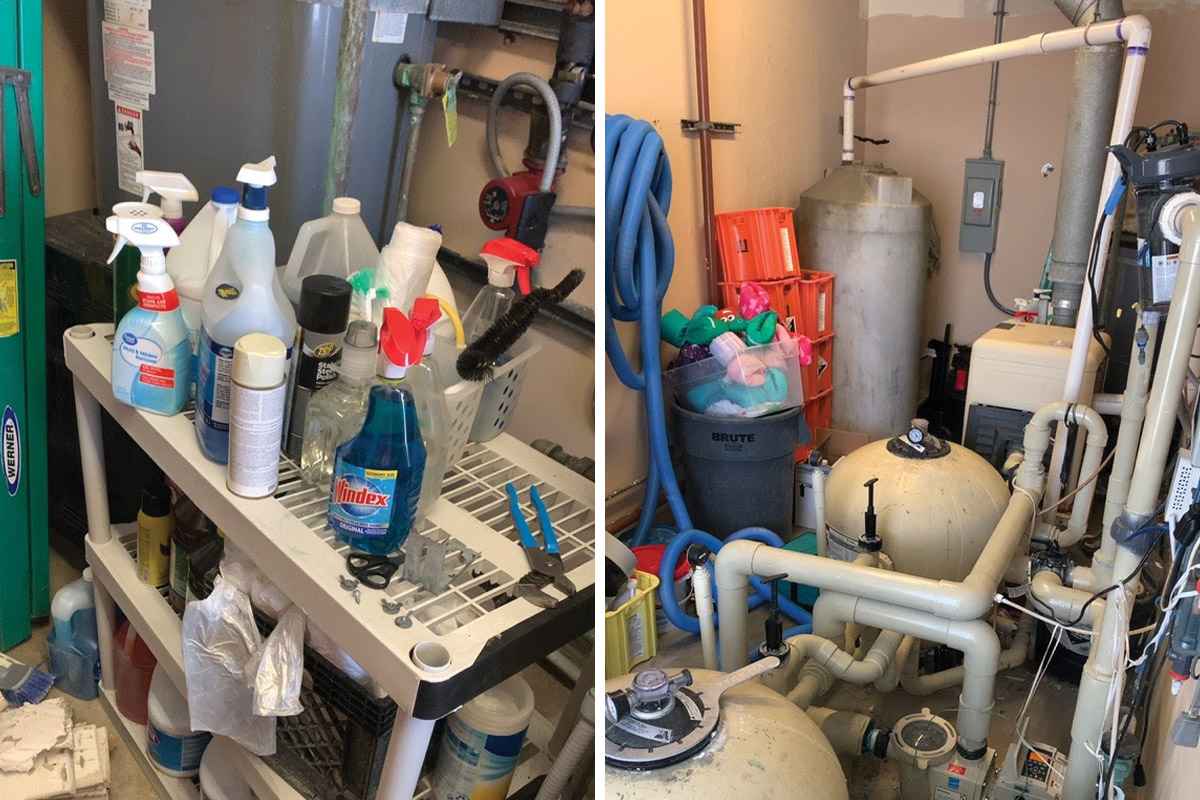
Photos: Jason Broswell
How to Properly Label and Store Chemicals
